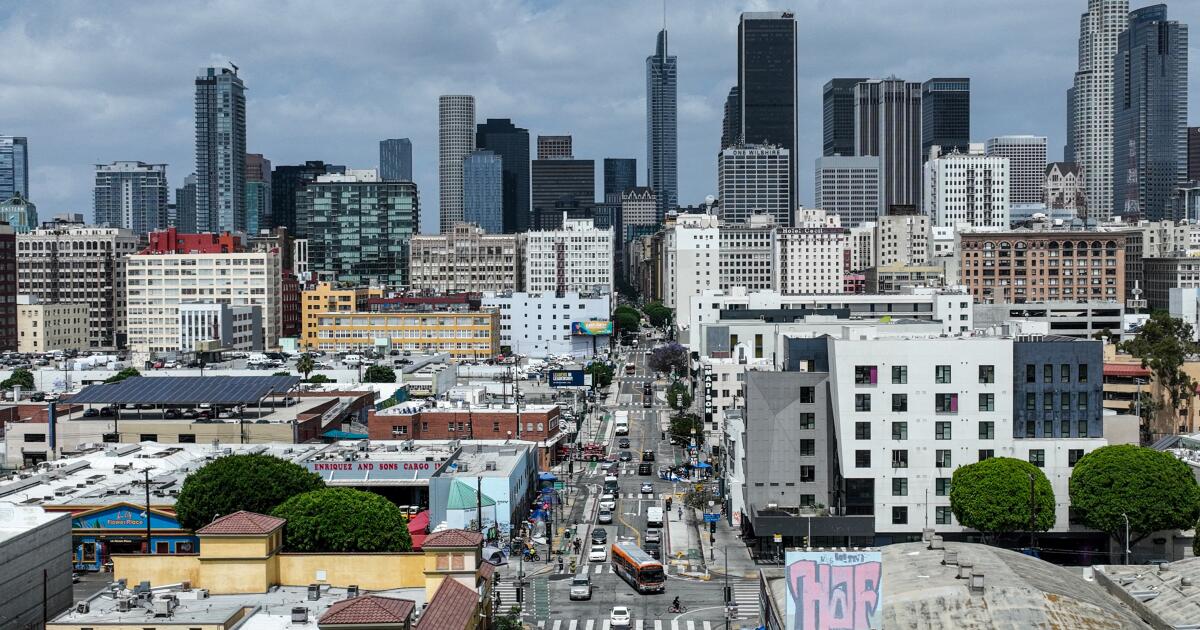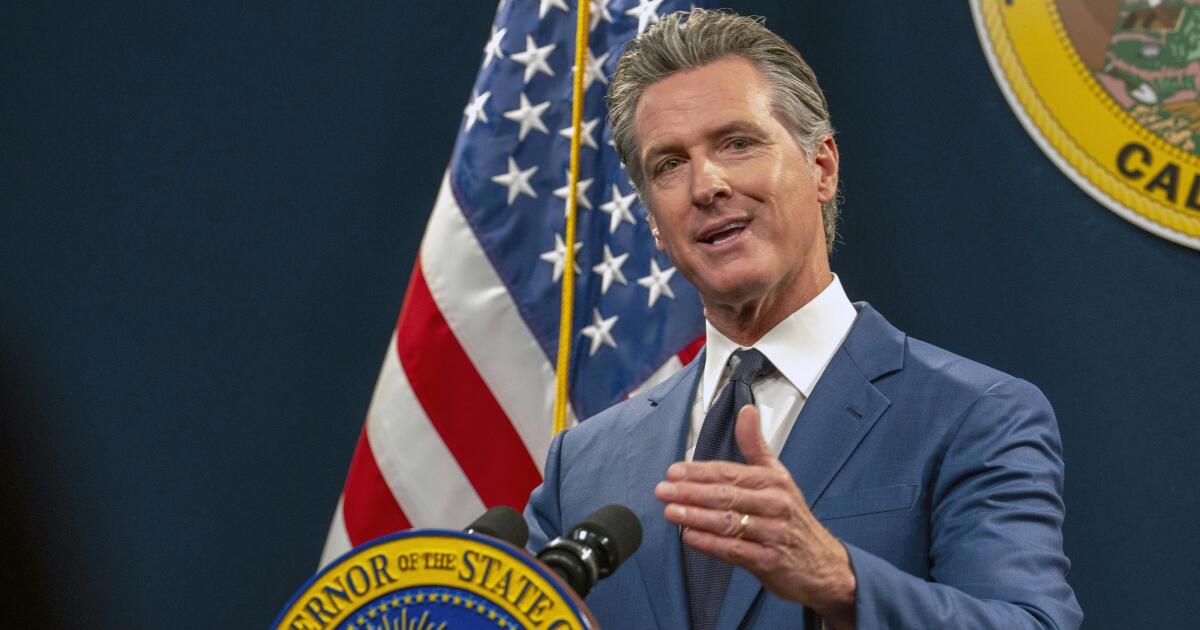California faces an additional $12-billion budget deficit, Newsom says
California is facing an additional $12-billion state budget shortfall next year, a deficit largely caused by overspending and that Gov. Gavin Newsom said was made worse by President Trump’s federal tariff policy.
“California is under assault,” Newsom said. “The United States of America, in many respects, is under assault because we have a president that’s been reckless.”
Newsom unveiled the forecast during a presentation Wednesday of his $321.9-billion revised spending plan that proposes walking back free healthcare for low-income undocumented immigrants, eliminating Medi-Cal benefits for expensive weight loss treatments and cutting back overtime hours for in-home supportive service workers, among dozens of other trims.
The new deficit comes in addition to $27.3 billion in fiscal remedies, including $16.1 billion in cuts and a $7.1-billion withdrawal from the state’s rainy day fund, that lawmakers and the governor already agreed to make in 2025-26.
The overall $39-billion shortfall marks the third year in a row that Newsom and lawmakers have been forced to reduce funding for state programs after dedicating more money than California has available to spend.
Newsom’s proposed cuts
Among the new cuts Newsom put on the table Wednesday is a call to cut back on his signature policy to provide free healthcare coverage to income-eligible undocumented immigrants.
Newsom is proposing freezing new Medi-Cal enrollment for undocumented adult immigrants as of Jan. 1 and requiring those over 18 to pay $100 monthly premiums to receive healthcare coverage through Medi-Cal.
The cost share will reduce the financial burden on the state and could lower the total number of people enrolled in the healthcare program if some immigrants cannot afford the new premiums. Freezing enrollment may prevent the price tag of the program from continuing to balloon after more people signed up for coverage than the state anticipated.
The changes offer minor savings of $116.5 million next year, with savings growing to $5.4 billion in 2028-29.
The governor is also following the federal government’s lead and cutting $85 million in benefits for Ozempic and other popular weight loss medications from all Medi-Cal coverage plans, while saving $333.3 million by eliminating long-term care benefits for some enrollees.
Newsom wants to cap overtime hours for in-home support service workers, according to his budget, to save $707.5 million next year.
The governor’s budget includes a controversial proposal to grab $1.3 billion in funding in 2025-26 from Proposition 35, a measure voters approved in November that dedicated the revenue from a tax on managed care organizations to primarily pay for increases to Medi-Cal provider rates. The decision is expected to draw pushback from a coalition of doctors, clinics, hospitals and other healthcare groups that supported the proposition, which nearly 68% of voters backed.
Under another cost-saving measure, the governor wants to shift $1.5 billion in funding for Cal Fire from the general fund. Instead, Newsom wants to provide that $1.5 billion from the greenhouse gas reduction fund paid for by proceeds of the state cap-and-trade program next year.
The governor’s budget proposes extending the cap-and-trade program — a first-of-its-kind initiative that sets limits on companies’ greenhouse gas emissions and allows them to buy additional credits at auction from the state, and he wants to dedicate at least $1 billion each year to high speed rail.
A spending deficit
The budget marks a continuation of years of overspending in California under the Newsom administration.
After predicting a lofty $100-billion surplus from federal COVID-19 stimulus funding and the resulting economic gains three years ago, Democrats have not reduced spending to match up with a return to normal after the pandemic.
Poor projections, the ballooning cost of Democratic policy promises and a reluctance to make long-term sweeping cuts have added to the deficit at a time when the governor regularly touts California’s place as the fourth largest economy in the world.
State revenues have exceeded expectations since April, but so has state spending.
Despite the shortfall, California has more money to spend than in the prior budget approved in June, and the governor and lawmakers still plan to take $7.1 billion from the state’s rainy day fund to cover the total 2025-26 deficit.
A “Trump Slump”
Though personal income tax and corporate tax receipts in the state came in $6.8 billion above projections through April, Newsom is predicting that overall revenues will be $16 billion lower than they could have been from January 2025 through June 2026 because of the economic impact of Trump’s tariffs.
The governor originally released the new information, which his team dubbed the “Trump Slump,” on the eve of the presentation of his revised 2025-26 state budget plan, seeking to blame the president for California’s expected revenue shortfall.
Trump in April implemented a series of tariffs on all imported goods, higher taxes on products from Mexico, Canada and China, and specific levies on products and materials such as autos and aluminum. The president has backed down from some of his tariffs, but Newsom alleges that the policies and economic uncertainty will lead to higher unemployment, inflation, lower GDP projections and less capital gains revenue for California.
California filed a lawsuit last month arguing that Trump lacks the authority to impose tariffs on his own. On Tuesday, the state said it will seek a preliminary injunction to freeze the tariffs in federal court.

